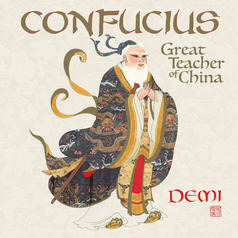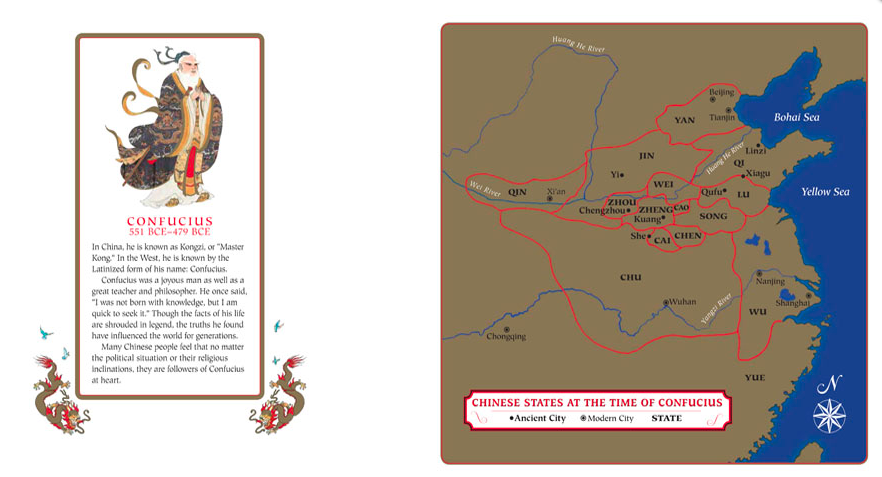 January marked the release of Confucius: Great Teacher of China by renowned children’s book author and illustrator, Demi. This beautifully illustrated biography pays homage to a man whose philosophy shaped the course of Chinese history. In this previous blog post, Demi speaks about the sources that served as inspiration for Confucius.
January marked the release of Confucius: Great Teacher of China by renowned children’s book author and illustrator, Demi. This beautifully illustrated biography pays homage to a man whose philosophy shaped the course of Chinese history. In this previous blog post, Demi speaks about the sources that served as inspiration for Confucius.
The Confucius Teacher’s Guide offers resources and tips on how to guide discussions about Confucius and his work in the classroom. This title and teacher’s guide is perfect for a unit on biographies, China, ancient civilizations, philosophers, and more. Our teacher’s guide also features summary and background information, prereading and discussion questions, ideas for reader’s response and writing activities, strategies for ELL/ESL, and interdisciplinary activities and connections. Below we’ve shared a few activities and resources from the Confucius Teacher’s Guide.
English Language Arts
Have students select a writing from Confucius and describe what it means to them. Have students write about a statement from Confucius and how it applies to their own lives. Why is this specific quotation meaningful? Why do you think Confucius wrote it? For a more comprehensive list of his sayings, see the following resource.
Have students create a chart with Confucius’s most important values: ren (compassion or love for other human beings); de (virtue— acting according to moral standards); yi (righteousness); and li (correctness in all actions, rituals, speech, and behavior). Have students brainstorm different characteristics that correspond to each value as a whole class or in small groups. Then, have students talk about a person who has zhi (or wisdom), and a person who is a junzi (a superior human being). What kinds of actions does a person with zhi or who is a junzi need to perform? How do you demonstrate the qualities that Confucius emphasized?
Social Studies/Geography
Have students conduct a research project on the Zhou dynasty. Divide students into four groups: Geography, Political Leaders, Cultural Influences, and Conflicts. Have students use the following questions to guide their research in each of their respective groups: What was the geography like during the Zhou dynasty? Who besides Confucius were the political leaders? What was the culture like during the Zhou dynasty? What about artwork? What kinds of conflicts or wars happened during the Zhou dynasty? Refer to PBS Learning Media’s Timeline, “The Story of China.”
Art/Media
Use the MFA Boston’s slideshow and corresponding questions in: “Buddhism, Daoism, and Confucianism: Art and Religion in Ancient China”. Have students write strictly what they observe when they first see the piece of art. Then have students think about how the art may reflect or embody Confucius’s values. What makes them think that? What evidence in the art made them think about Confucius?
School-Home Connection
Have students talk with family members about the qualities that they value in themselves and in their own family members. Have students share with family members the values that Confucius admires. What do they think of those qualities themselves? How do they show those qualities in their own life?
Further Reading and Resources








